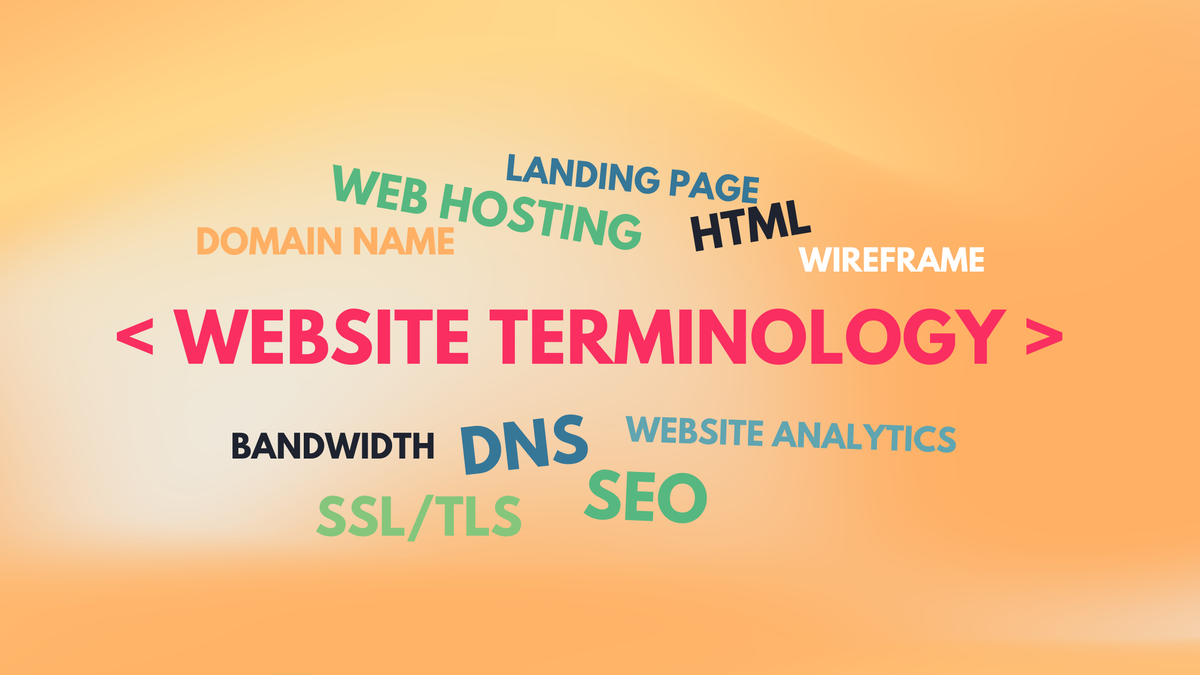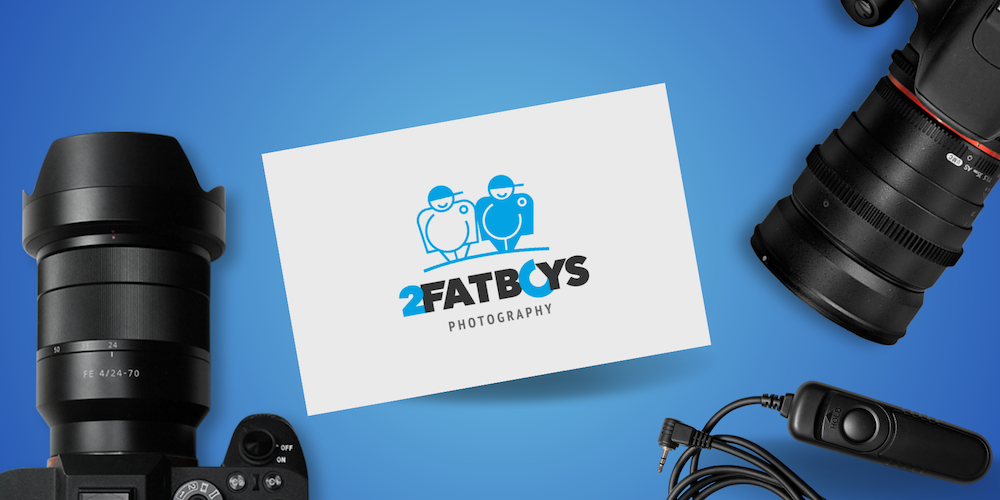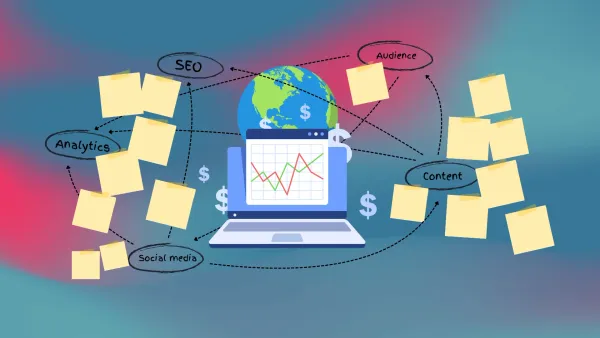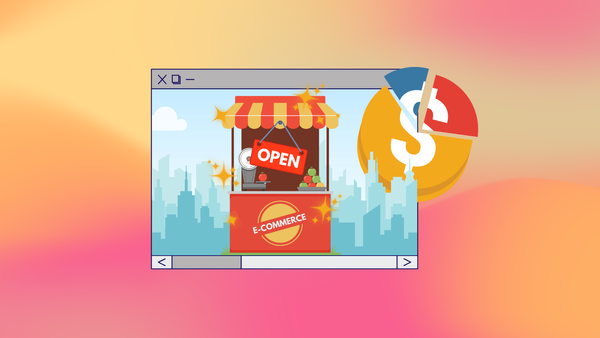50 Website Terms: Enhance Your Web Vocabulary
Enhance your web vocabulary with our comprehensive guide to 50 essential website terms. From HTML and SEO to CMS and UX, learn the key concepts and terminology every web professional should know. Perfect for developers, designers, and marketers.

Introduction
In the fast-paced digital age, having a strong grasp of website terminology is crucial. Whether you are a web developer, designer, marketer, or simply someone interested in understanding how the web works, knowing the right terms can greatly enhance your communication and efficiency. Understanding these terms not only helps in making informed decisions but also empowers you to better collaborate with web professionals. This article aims to expand your web vocabulary by introducing and explaining 50 essential website terms.
Common Website Terminology
1. Domain Name
A domain name is the address where users can access a website. It is the unique name that appears after "www" in web addresses. For example, in www.mediakular.com, "mediakular.com" is the domain name.
You can register domain names with so called Domain Registrars. Some of the most popular ones are NameCheap, GoDaddy, IONOS and Google Domains. Here you can find a List of The Best Domain Registrars Of 2024 on Forbes.
2. URL (Uniform Resource Locator)
A URL is the web address of a specific page or file on the internet. It typically consists of the domain name along with additional path information.
For example
http://www.mywebsite.com/index.html
would be a URL consisting of "http" as a protocol, "www.mywebsite.com" as hostname and "index.html" as the file name.
3. HTML (Hypertext Markup Language)
HTML is the standard language used to create web pages. It structures content on the web by using elements such as headings, paragraphs, links, and images.

4. CSS (Cascading Style Sheets)
CSS is a style sheet language used for describing the presentation of a document written in HTML. It controls the layout, colors, fonts, and overall look of a website.
Here you can find a 100 second long explanation about CSS
5. JavaScript
JavaScript (or short "JS") is a programming language commonly used in web development to create interactive effects and enhance user experience on websites.
If you would imagine HTML as a raw construction site, and CSS as the wall paintings and tiles, then JavaScript would be the electric and the water pipes.
6. Responsive Design
Responsive design refers to a web design approach that ensures a website looks good and functions well on a variety of devices, including desktops, tablets, and smartphones. Often people also talk about "Mobile optimization", which means in most cases the same, even if the name does not include other devices than mobile phones.
7. CMS (Content Management System)
A CMS is a software application that allows users to create, edit, manage, and publish digital content easily. Popular CMS platforms include WordPress, Joomla, and Drupal.
8. SEO (Search Engine Optimization)
SEO is the process of optimizing a website to rank higher in search engine results. It involves using keywords, creating quality content, and improving site structure.
9. Back-End
The back-end of a website refers to the server-side of web development. It involves databases, server logic, and application programming interfaces (APIs) that work behind the scenes.
10. Front-End
The front-end of a website refers to the client-side of web development. It includes everything that users interact with directly in their browsers, such as layouts, buttons, and images.
11. API (Application Programming Interface)
An API is a set of rules that allows different software applications to communicate with each other. APIs are used to integrate various services and functionalities. You can see it as an abstraction layer for authentication, business logic and communication with a database. APIs can accept commands in order to run business code, return data on request, or both.
12. UI (User Interface)
The UI is the visual part of a website or application that users interact with. It includes buttons, forms, menus, and other elements. If a user browses for new shoes on a website, they are using the User Interface to do so. The User interface is always an important part of a Front-End.
13. UX (User Experience)
UX refers to the overall experience a user has while interacting with a website or application. Good UX design ensures the site is easy to use, efficient, and enjoyable.
Confused with the difference between UI and UX? Here is a short explanation of the difference:
UX/UI Explained in 2 minutes
14. Wireframe
A wireframe is a visual blueprint of a web page that outlines the structure and layout without detailing design elements. It helps in planning the site's architecture. In the stage of "Wireframing" the designer does not focus on visual appearance, but on the layout of a web page or app.

15. Prototype
A prototype is an early sample or model of a website used to test and validate ideas before full-scale development begins. It often includes interactive elements.
16. Landing Page
A landing page is a standalone web page designed specifically for a marketing or advertising campaign. Its purpose is to capture leads or drive conversions.
17. Bounce Rate
Bounce rate is a term often used in relation to SEO. It is a metric that measures the percentage of visitors who leave a website after viewing only one page. A high bounce rate may indicate poor user engagement.
18. Cookies
Cookies are small sweet cakes, typically round and flat with a crisp or chewy texture 🍪. But when we talk about the internet we usually refer to small data files stored on a user's computer by websites. They are used to remember user preferences, login information, and track user behavior.

19. SSL/TLS (Secure Sockets Layer/Transport Layer Security)
SSL and its successor, TLS, are cryptographic protocols designed to provide secure communication over a computer network. They ensure that data transmitted between a web server and a browser remains encrypted and protected from eavesdropping.
Websites with SSL/TLS display a padlock icon in the browser's address bar, indicating that the connection is secure. Implementing SSL/TLS is essential for protecting sensitive information such as login credentials and payment details.
20. Bandwidth
Bandwidth refers to the amount of data that can be transmitted over an internet connection in a given amount of time. It affects the loading speed of a website.
21. Web Hosting
Web hosting is a service that allows organizations and individuals to post a website or web page onto the internet. Hosting providers allocate space on their servers for websites, ensuring they are accessible online.
Different types of hosting include shared, dedicated, VPS (Virtual Private Server), and cloud hosting, each offering varying levels of performance, control, and cost.
22. DNS (Domain Name System)
DNS is a system that translates domain names into IP addresses, allowing browsers to locate and load websites.
23. SSL Certificate
An SSL certificate is a digital certificate that authenticates a website's identity and enables an encrypted connection. It is essential for protecting sensitive data. Let's Encrypt is an example for a free and open certificate authority that issues SSL Certificates.
24. Web Analytics
Web analytics involves the collection, measurement, and analysis of web data to understand and optimize web usage. Tools like Google Analytics provide insights into user behavior, traffic sources, and conversion rates.

By analyzing this data, businesses can make informed decisions to improve website performance, enhance user experience, and achieve marketing goals. Effective use of web analytics helps in identifying trends, measuring campaign effectiveness, and understanding audience demographics
25. Schema Markup
Schema markup is a code that helps search engines understand the content on your website. It enhances rich snippets in search results.
26. Breadcrumbs
Breadcrumbs are a navigation aid that shows users the path they have taken to arrive at a current page, enhancing website usability.
27. Favicon
A favicon is a small icon associated with a website, displayed in the browser tab and bookmarks. It helps users identify and locate the site easily.
28. Viewport
A viewport is the visible area of a web page on a user's device. Responsive design adjusts the content to fit different viewport sizes.
29. Web Accessibility
Web accessibility ensures that websites are usable by people with disabilities. It involves designing and coding websites to be accessible to everyone.
30. Caching
Caching is the process of storing copies of files or data in a cache, or temporary storage, to reduce load times and improve website performance.
31. Alt Text
Alt text is a description added to an image's HTML tag, providing alternative information for users who cannot see the image. It also helps with SEO.
32. Hero Image
A hero image is a large, high-quality image prominently displayed at the top of a webpage, often with a headline or call to action.
33. Meta Tags
Meta tags are snippets of text in the HTML that describe a webpage's content. They help search engines understand and index the page.
<meta charset="UTF-8">
<meta name="description" content="Full-Service Digital Agency">
<meta name="keywords" content="Logo & Branding, Web Design, Marketing">
<meta name="author" content="John Doe">
<meta name="viewport" content="width=device-width, initial-scale=1.0">Example of a some meta tags of a website
34. Call to Action (CTA)
A CTA is a prompt on a website that encourages users to take a specific action, such as signing up for a newsletter or making a purchase.
In the following example the call to action is a button with the text "Subscribe Now". A CTA does not necessarily need to be button, it can also be a anchor text or an image.
35. Lazy Loading
Lazy loading is a technique that delays the loading of images and other media until they are needed, improving page load times and performance.
36. Parallax Scrolling
Parallax scrolling is a web design effect where background images move slower than foreground images, creating an illusion of depth.
37. Heatmap
A heatmap is a visual representation of user interactions on a webpage, showing where users click, scroll, and move their mouse.
Example for a heatmap displayed as an overlay on top of a website
38. Web Framework
A web framework is a software framework designed to support the development of web applications, including web services, web resources, and web APIs.
39. Bootstrap
Bootstrap is a popular open-source front-end framework for developing responsive and mobile-first websites. It includes CSS and JavaScript-based design templates.
40. WordPress
WordPress is a widely-used open-source content management system (CMS) that powers millions of websites. It is known for its flexibility and ease of use.

41. Permalink
A permalink is a permanent URL that points to a specific blog post or page on a website. It remains unchanged over time, ensuring a consistent link.
42. Gutenberg Editor
The Gutenberg Editor is the default block editor for WordPress, allowing users to create content using a visual block-based interface.
43. DNS Propagation
DNS propagation is the time it takes for DNS changes to be updated across the internet. It can take up to 48 hours for changes to be fully propagated.
44. WebP
WebP is a modern image format that provides superior lossless and lossy compression for images on the web, reducing file sizes and improving load times.
45. HTTP/2
HTTP/2 is a major revision of the HTTP network protocol, designed to improve the performance and speed of data transfer between clients and servers.
46. Sitemap
A sitemap is a file that lists all the pages of a website, helping search engines crawl and index the site's content more effectively.
47. Mockup
A mockup is a high-fidelity visual representation of a website's design, showing how the final site will look. It is often used for client presentations and approvals.

48. CDN (Content Delivery Network)
A CDN is a network of servers distributed across different locations to deliver web content more quickly and efficiently to users based on their geographic location.
49. Pixel
In web design, a pixel is the smallest unit of a digital image or display. Web designers use pixels to ensure precise control over the layout and design elements.
50. Git
Git is a version control system used by developers to manage and track changes in source code during software development. It allows multiple developers to work on a project simultaneously.
Conclusion
Having a strong web vocabulary can significantly improve your ability to communicate effectively with web professionals and make informed decisions about your web projects.
If you have an idea for a website project or need professional assistance, feel free to get in touch with us at mediakular. We are here to help bring your vision to life.





